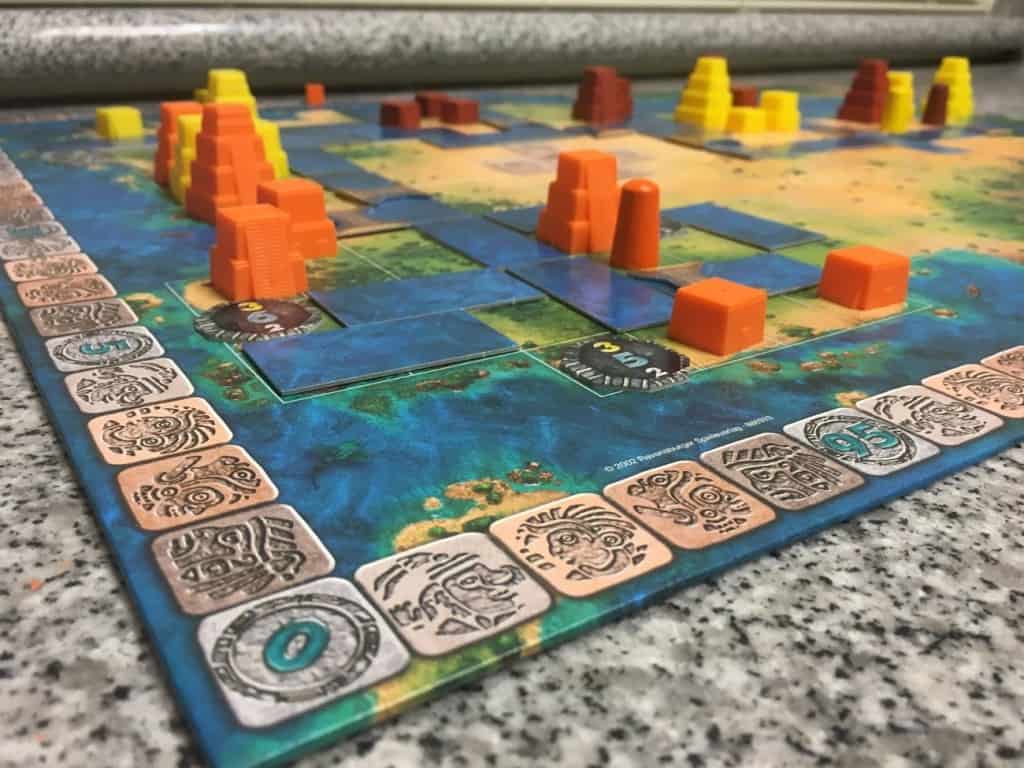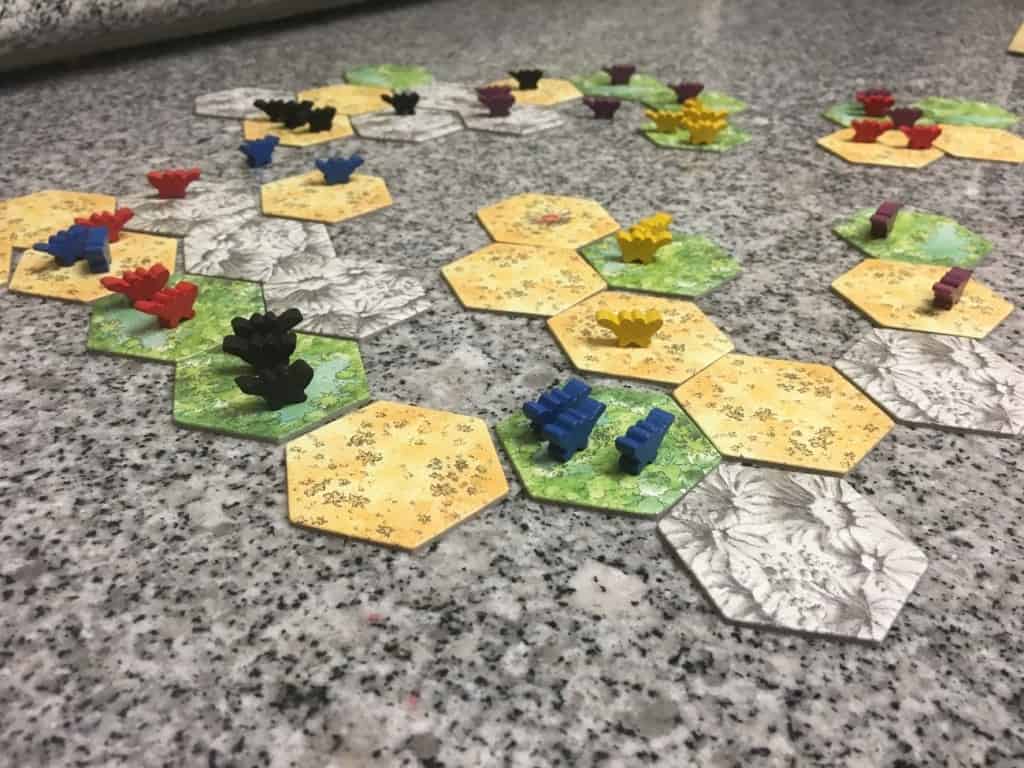
When I first started in this hobby 12 years, I was amazed at games liked Mexica, a true masterpiece of spatial gaming. Players place water tiles to define the boundaries of districts. These water tiles also control how players’ pawns can move around the board. Players build temples in the districts to stake a claim, but those temples also act as blockers for players’ pawns. It was mind-blowingly good.

Or, I was playing games like Trias, where players break apart a continent of tiles into ever smaller continents while trying to get their dinosaurs on the biggest remaining continents to score the most points. It was another very good spatial game.

Fast forward to the last few years and I’ve noticed that I’ve been less enthusiastic about each new crop of games being announced at Gen Con and Essen. After looking through the upcoming games, I realized what was missing.
NEWER GAMES SEEMED CONSIDERABLY LESS SPATIAL.
What do I mean by spatial? I’m talking about games that present a serious spatial puzzle to the player to solve and master. It could involve route building like Ticket to Ride, tile laying like Tigris and Euphrates, area enclosure like Samurai, area control like Blue Moon City, pawn movement like Pandemic, pick up and deliver like On the Underground, or gameplay that involves three dimensionals such as multi-level time placement in Taluva. If you look back at the history of board games, games were virtually all spatial like Go, Chess, Backgammon, and Mancala. My own game, Völuspá, is a tricky spatial puzzle where you must cleverly place your god tiles to score the most points.
These days, a hot new set of mechanics have become all the rage: card drafting, deck building, dice rolling, social deduction, worker placement, and tableau building. These are all perfectly good mechanics and I like many games with these mechanics, but, by and large, games with these mechanics are not spatial. Card drafting, deck building, dice rolling, and social deduction games often have no boards or spatial components. Worker placement games have boards, but the layout of the various spots to place your workers is not usually significant. The board is just a way of keeping track where each player places their worker and shows the benefits for placing in each spot. Tableau building games are usually more concerned with engine building than spatial considerations. Consider how few spatial attributes are in games like Dominion, 7 Wonders, King of Tokyo, Love Letter, and Dead of Winter.
According to an article by blogger, Edward Kung, also known as Ludometrica, here are the top 5 game mechanics in 2004 and 2014 as measured by the number of published games with at least 100+ ratings on BoardGameGeek. The first three mechanics are the same, but tile placement and area control have been bumped from their high perch.
TOP 5 MECHANICS IN 2004 BY # GAMES PUBLISHED

TOP 5 MECHANICS IN 2014 BY # GAMES PUBLISHED

In the same article, Ludometrica, also calculates the hottest mechanics from between 2004 and 2014. No surprise, deck building and worker placement have taken over.
HOTTEST GAME MECHANICS FROM 2004 TO 2014

Obviously, there are many notable exceptions of spatial games in recent years: The Castles of Burgundy has intricate tile placement on unique boards, Five Tribes brings back the Mancala mechanic in a new way, Castles of Mad King Ludwig involves building elaborate castles from different shaped tiles, Pandemic Legacy ups the ante on navigating the board with your pawns to save the world, Terra Mystica involves a detailed map with energy benefits for being close to other races, and Patchwork lets players build their quilt from Tetris type pieces while maintaining a good income of buttons. But these spatial gems are few and far between among the sea of non-spatial games.
Still, I wonder why games have seemingly moved away from spatial game play. Is it because game designers feel like the spatial game mechanics have been exhausted or is the lure of new mechanics too hard to resist? Is it because players’ tastes have changed to either more intricate worker placement games or quick-playing social deduction games?
What do you think? Do you agree games are getting less spatial? Do you miss having more of a spatial component to games? Do you think games will go back to being more spatial again? Please share your thoughts in the comment section.
Notes: All three data tables come from: Kung, Edward. “Popular Mechanics (An Empirical Analysis), Part 1.” Ludometrica. GeneratePress, 11 January 2016. Web. 07 April 2016.








